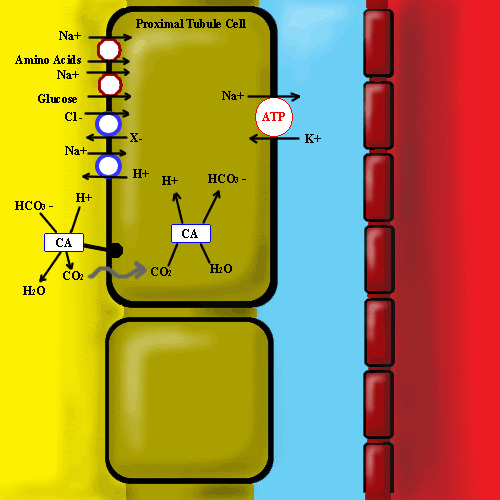

The proximal tubule is the main site of reabsorption for the majority of ions
filtered in the glomerulus. The carbonic anhydrase enzyme present in the brush
border serves to convert bicarbonate into CO
Drugs such as Acetazolamide act to inhibit carbonic anhydrase and result in a bicarbonate diuresis. Because normal bicarbonate reabsorption involves significant sodium reabsorption as well, carbonic anhydrase inhibitors result in large amounts of sodium presented to the collecting ducts. This results in "potassium wasting".
Carbonic anhydrase inhibitors are used mainly in the treatment of glaucoma because of their ability to prevent bicarbonate secretion into aqueous humor by the ciliary epithelium of the eye. Topical preparations are available for use in the eye.
You have already learned about the use of carbonic anhydrase inhibitors in high-altitude sickness. Administration results in acidosis of the CSF, causing hyperventilation, which protects against high-altitude sickness.
Drowsiness and paresthesias are common side effects of oral therapy. As with other sulfonamide derivatives, allergies to sulfa drugs apply. Formation of renal stones as a result of precipitation of calcium salts may occur. Hepatic encephalopathy may occur in patients with hepatic impairment as a result of decreased ammonia reabsorption.